{vi1}”Do Koreans really put a napkin under their spoon and chopsticks?” asked Natalia Lima, a 28-year-old Brazilian woman who has binge-watched Netflix’s hit animated film KPop Demon Hunters more than twice.{vi2} {vi3}In a scene that caught her eye, main characters Rumi, Mira, and Zoey, members of the fictional K-pop group Huntrix, are chowing down on gukbap (a Korean rice soup) at a restaurant. Lima noticed Mira placing her spoon and chopsticks on a folded napkin.{vi4} {vi5}”In Brazil, we usually plop our utensils right on the table or wrap them in a napkin. Using a napkin just as a utensil rest? That’s totally new to me. I’d love to see how common this actually is if I ever get to visit Korea,” Lima dished to The Korea Herald.{vi6} {vi7}While the animated flick follows a K-pop trio battling evil spirits with their music (cue the flashy fights and jaw-dropping performances), many international viewers are just as captivated by the slice-of-life moments sprinkled throughout.{vi8} {vi9}Here’s a peek at some details in the show that feel totally normal to Koreans but might raise a few eyebrows among foreign viewers.{vi10} {vi11}{vi12}Couch as a backrest{vi13} In one scene, the trio is noshing on Korean street food faves like gimbap (think Korean sushi rolls), tteokbokki (spicy rice cakes that’ll set your mouth on fire), and hotteok (a sweet pancake that’s to die for) on their private jet. Despite having plush couches at their disposal, they opt to sit on the floor.{vi14} {vi15}In Korea, it’s totally normal to plop down on the floor with a low table in front and use the couch as a backrest. You’ll spot this all over Korean TV shows, dramas, and YouTube vlogs.{vi16} {vi17}This floor-sitting habit stems from Korea’s long-standing tradition of “ondol” – a floor heating system that’s been keeping Korean tushies toasty for centuries.{vi18} {vi19}Even today, many restaurants offer both floor and table seating. And during holidays, it’s not uncommon to see families gathered on the living room floor, sharing a meal and probably arguing over the last piece of bulgogi.{vi20} {vi21}{vi22}Walls plastered with celeb photos at clinics and restaurants{vi23} For some Korean customers, the number of celebs and big shots who’ve visited a place can be a make-or-break factor in deciding whether to check it out themselves.{vi24} {vi25}That’s why it’s not unusual to walk into a Korean restaurant or clinic and feel like you’ve stumbled onto a Hollywood Walk of Fame. Walls are often covered with framed photos and autographs of celebs, politicians, and social media influencers.{vi26} {vi27}In the film, we see Rumi (who’s having some voice troubles) visiting a traditional Korean medicine clinic. One wall is practically wallpapered with photos of the doctor rubbing elbows with celebs.{vi28} {vi29}Back in the day, before Yelp and Instagram took over, a celeb visit was like getting a gold star of approval. This practice is still a big deal in Korea’s dining scene.{vi30} {vi31}”As a small business owner, we don’t have the big bucks for fancy marketing campaigns. Word of mouth is our bread and butter. If even one celeb drops by, the neighborhood buzz goes through the roof. It’s a total game-changer,” shared Yang Yoon-mo, 37, who runs a trendy bakery cafe in Cheonan.{vi32} {vi33}Experts often point to the “bandwagon effect” as the secret sauce behind celeb-driven marketing in Korea.{vi34} {vi35}”It’s been a thing forever for Korean beauty clinics to plaster their walls with celeb photos and autographs. It’s like social proof on steroids for Koreans, who tend to be more swayed by what others think compared to many other countries. This ‘jumping on the bandwagon’ mentality is super charged by Korea’s group-oriented culture,” explained Lee Eun-hee, a consumer psychology guru at Inha University.{vi36} {vi37}”For consumers, seeing their fave celeb has visited a clinic can create an emotional connection. It’s like, ‘If it’s good enough for BTS, it’s good enough for me!'” she added.{vi38} {vi39}{vi40}Puffer coats and T-shirts: A fashion face-off{vi41} Last November, Seoul’s streets looked like a fashion show gone wild, with people rocking everything from tank tops to puffy jackets.{vi42} {vi43}Blame it on the weather’s mood swings. The third week of November felt like summer 2.0, with temps hitting around 68°F, before plummeting nearly 18 degrees in the final week, according to Korea’s weather gurus.{vi44} {vi45}South Korea’s four distinct seasons are getting a climate change makeover. Now, it’s totally normal for Koreans to keep a year-round wardrobe that could outfit them for both a beach day and a snowstorm.{vi46} {vi47}”Global warming is cranking up the heat faster in higher latitudes, which is messing with the Arctic’s cold air and making the jet stream go haywire. The result? More crazy cold snaps and heatwaves than ever before,” explained Kim Hae-dong, an environmental science whiz at Keimyung University.{vi48} {vi49}This April, Seoul got a surprise snowfall, turning parts of the city into a winter wonderland. Fast forward to May, and it was suddenly shorts weather, with temps soaring above 68°F for days on end.{vi50} {vi51}”I used to do the whole seasonal wardrobe swap thing, but now my closet looks like it’s ready for any weather apocalypse,” one X user quipped.{vi52} {vi53}{vi54}Alleys: Where parking rules are more like suggestions{vi55} In one scene, Jinu, the dreamy leader of the fictional boy band Saja Boys, takes a pensive stroll through a narrow alley.{vi56} {vi57}While it wasn’t meant to be funny, this scene probably had Korean drivers chuckling (or groaning) in recognition at the sight of cars parked willy-nilly along the cramped street.{vi58} {vi59}Despite the ground screaming “NO PARKING” in bold letters, cars are lined up like it’s a parking lot. It’s a headache-inducing issue in many Korean cities and a long-standing thorn in the side of law-abiding citizens.{vi60} {vi61}”That scene? Total déjà vu. It’s like every time I try to squeeze down a narrow alley, only to get stuck because of illegal parkers on both sides. And then, boom! Another car comes from the other direction. Cue the awkward stand-off,” shared Yang, a 34-year-old Seoul office worker.{vi62} {vi63}”It’s a bit embarrassing, but yeah, that’s our reality. I bet foreigners would be shocked at how common this parking free-for-all is in Korea.”{vi64} {vi65}The numbers don’t lie: Seoul’s coffers got a 6.2% boost in parking fines last year, raking in a whopping 77.35 billion KRW (about $58 million) compared to 2022’s 72.84 billion KRW.{vi66} {vi67}One Japanese viewer in the U.S. couldn’t believe their eyes, commenting on Facebook, “You’d never see this in a Japanese anime.”{vi68} {vi69}”In Japan, the cops outsource parking enforcement to private companies. You’ve got retirees out there playing parking police, and they don’t mess around. The rules are the rules, period.”{vi70}{vi71}
Comments0
[LATEST] Latest Stories
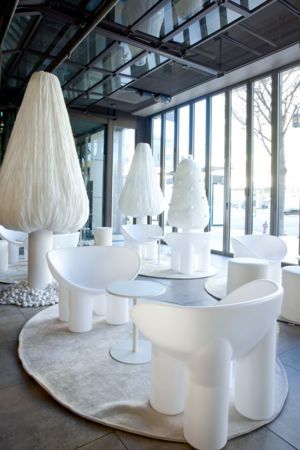 Dongsuh Foods unveils winter-themed space and seasonal menus at Maxim Plant
Dongsuh Foods unveils winter-themed space and seasonal menus at Maxim Plant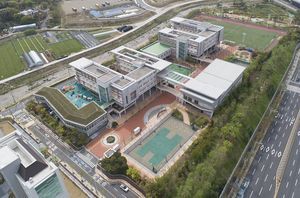 Global education, gated access: Who gets into Korea’s international schools
Global education, gated access: Who gets into Korea’s international schools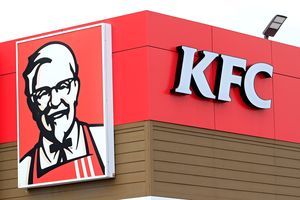 Carlyle to acquire full stake in KFC Korea
Carlyle to acquire full stake in KFC Korea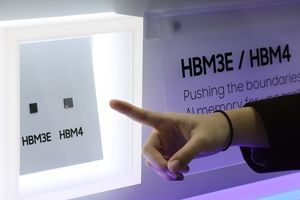 Samsung gains ground in Nvidia HBM4 tests as AI memory supply race tightens
Samsung gains ground in Nvidia HBM4 tests as AI memory supply race tightens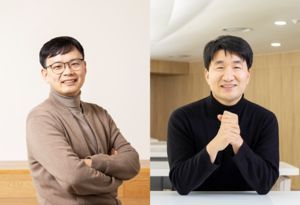 Samsung’s chip execs named IEEE fellows for 2026
Samsung’s chip execs named IEEE fellows for 2026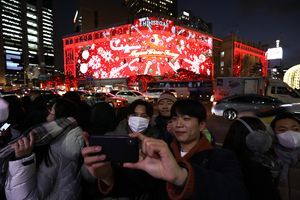 Heading to Myeong-dong? Expect holiday crowds
Heading to Myeong-dong? Expect holiday crowds
[LATEST] Popular Now
 Dongsuh Foods unveils winter-themed space and seasonal menus at Maxim Plant
Dongsuh Foods unveils winter-themed space and seasonal menus at Maxim Plant Global education, gated access: Who gets into Korea’s international schools
Global education, gated access: Who gets into Korea’s international schools Carlyle to acquire full stake in KFC Korea
Carlyle to acquire full stake in KFC Korea Samsung gains ground in Nvidia HBM4 tests as AI memory supply race tightens
Samsung gains ground in Nvidia HBM4 tests as AI memory supply race tightens Samsung’s chip execs named IEEE fellows for 2026
Samsung’s chip execs named IEEE fellows for 2026 Heading to Myeong-dong? Expect holiday crowds
Heading to Myeong-dong? Expect holiday crowds




Most Commented